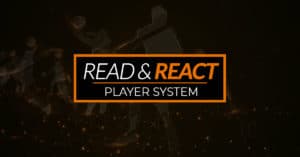In the previous sections of this interview with Chad Warner, head coach of the Shorter University Hawks, Coach Warner discussed his reasons for opting for the Read & React as well as his evolution from his first year with the system to his second year with it. Now, in part 3, Chad continues his discussion of his development as a coach from the viewpoint of simplicity.
When you first look at the Read & React (and even when you begin to put it in), it seems extremely simple. Each layer consists of one specific reaction to the ball and that reaction is always a fundamental basketball action. The bulk of layer 1 is if you pass, you must basket cut. It doesn’t get much simpler than that.
But, just because the actions seem simple, doesn’t mean they are always implemented easily. Since players aren’t usually in the practice of basket cutting after a pass or circle moving in relation to dribble penetration, there is a learning curve involved. It’s most easily described like this: implementing the Read & React is more about building new habits than learning new skills.
Because of this, Read & React practices must keep a focus on emphasizing those simple actions and that means being diligent in developing practice plans (and drills) that are layer intensive.
The Read & React has the capacity for extreme complexity, but it is all predicated on the mastery of the simplicity of the layers. A great symphony doesn’t get it’s complexity because it is made up of complex notes and chords. Nope, it is made up of the same simple chords that we all know. The complexity comes from the layering and merging of those chords. But, in order to compose a grand symphony, the composer must first master the simple notes.
The Read & React is the same way. Focus on mastering the layers, and you can easily build the symphony.






